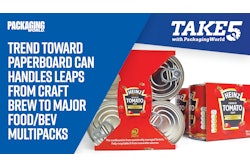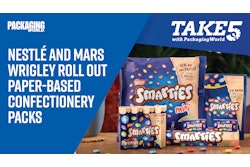The U.S. Food and Drug Administration is working up a new approach to food safety, one that tries to incorporate new and emerging digital technologies. The agency calls its new plan the “New Era of Smarter Food Safety Blueprint,” and it involves consideration of four key elements: tech-enabled traceability, smarter tools and approaches for prevention and outbreak response, new business models and retail modernization, and food safety culture.
The Blueprint, aiming to “create a safer and more digital, traceable food system” is almost certain to lead to some packaging changes.
With better traceability of food and its ingredients, goes the thinking, we’d all be able to look back at where every component of a food product came from, see how it was raised/grown/processed/handled/held/distributed, and thereby better get to the bottom of what went wrong.
The development of the Blueprint has a lot of moving parts. FDA has started holding public meetings with stakeholders, requesting public comments, has held informational webinars and podcasts, sponsored a ‘traceability challenge,’ created a new data analysis tool to identify potential disruptions in the food supply, undertaken a pilot study which uses AI for food import screening, and examined alternative ways to conduct inspections, including remote inspections. Going forward, it’s planning to complete pilot studies, hold a summit with food e-commerce stakeholders, train its own personnel, and update consumer education materials.
How might all this affect packaging? Let’s speculate a bit:
First, packaging, meaning labeling, might be enlisted to help traceability by featuring new and different informational QR codes or other batch or lot or date indications. Even if the future of food safety is digitally enhanced, labeling on packages will always be physical, movable signage, and will play a key role in communicating information.
And after all, packaging and labeling technologies that enhance product safety already exist, such as radio-frequency identification (RFID) tags and time-temperature indicators.
Second, the pedigree of packaging component materials, including who made the materials themselves, who converted them, and whether they promote sustainability, might be part of the picture. In the process of trying to capture information about ‘everything about a food’ in order to help assure its safety, the background details about its packaging might be included.
And, importantly, this might happen even if it’s not required or even recommended by FDA, if the idea simply captures the imagination of the marketplace, driven by consumer values-based interests or fears. (As you may know, some NGOs are already paying more attention to the safety of food packaging substances.)
PACK EXPO Las Vegas and Healthcare Packaging EXPO (Sept. 27-29, Las Vegas Convention Center) will reunite the packaging and processing community. With over 1400 exhibitors, no other event in 2021 will bring together a more comprehensive gathering of suppliers offering new products, technologies and solutions. Attendee registration is now open.
Can that happen? Well, things like that already have: Remember how in 2018 FDA made clear that suppliers of packaging materials were not among those FDA would require to confirm their compliance with the Food Safety Modernization Act, but then how lots of food companies started asking for it anyway?
My friend Dr. Robert Post told me it’s the tech-enabled aspects of the Blueprint that draw his attention most, and carry the potential for big changes and opportunities for packagers. Post runs a food product and marketing development consulting firm, FoodTrition Solutions, LLC, and has deep and complex experience both in government policymaking and in corporate regulatory positions. He has represented clients in meetings with FDA about the Blueprint. (Longtime readers of this column know I rely on him for well-informed input now and then.)
Post is concerned that the simple existence of available technologies could lead to their being required or recommended. Sometimes, he notes, “The minute you decide that you can provide information, someone will decide that it’s necessary that you do,” without giving enough thought to whether it’s practical, cost-effective and scalable for all sizes of companies, or really useful for your purposes.
He is also concerned that this whole traceability effort, and its attendant transparency, could run roughshod over companies’ trade secrets and other confidential business information, such as who its suppliers or copackers are, or its products’ ingredients. In the name of increased safety, he worries, information that is key to a company’s competitive advantage could be simply given away to a government database for all to see.
Also, how is all this newly collected digital data going to be used? For example, if foodborne illness outbreak data provides numerical grades or scores for specific foods, or even specific package types, will an adverse score reflect poorly, and unjustifiably, on a food or package?
Post suggests that packaging companies would do well to ask themselves, “What are the pieces of information that are most important,” and perhaps set their own standards—practical, cost-effective, but still helpful—that captures that information but doesn’t overdo it, and do all that before FDA or private groups decide for them.
If possible, the Blueprint is best seen as a series of opportunities rather than threats, Post notes. It’s best if you can identify a regulatory change before it arrives and figure out a way to meet a newly created need in the market.
Indeed, packagers who think the Blueprint might affect their business should track its progress and let FDA know their views on the various possible data and traceability ideas. More information about it can be found at www.fda.gov/food/new-era-smarter-food-safety.
Eric Greenberg can be reached at [email protected]. Or visit his firm’s Web site at www.ericfgreenbergpc.com.
INFORMATIONAL ONLY, NOT LEGAL ADVICE.


























